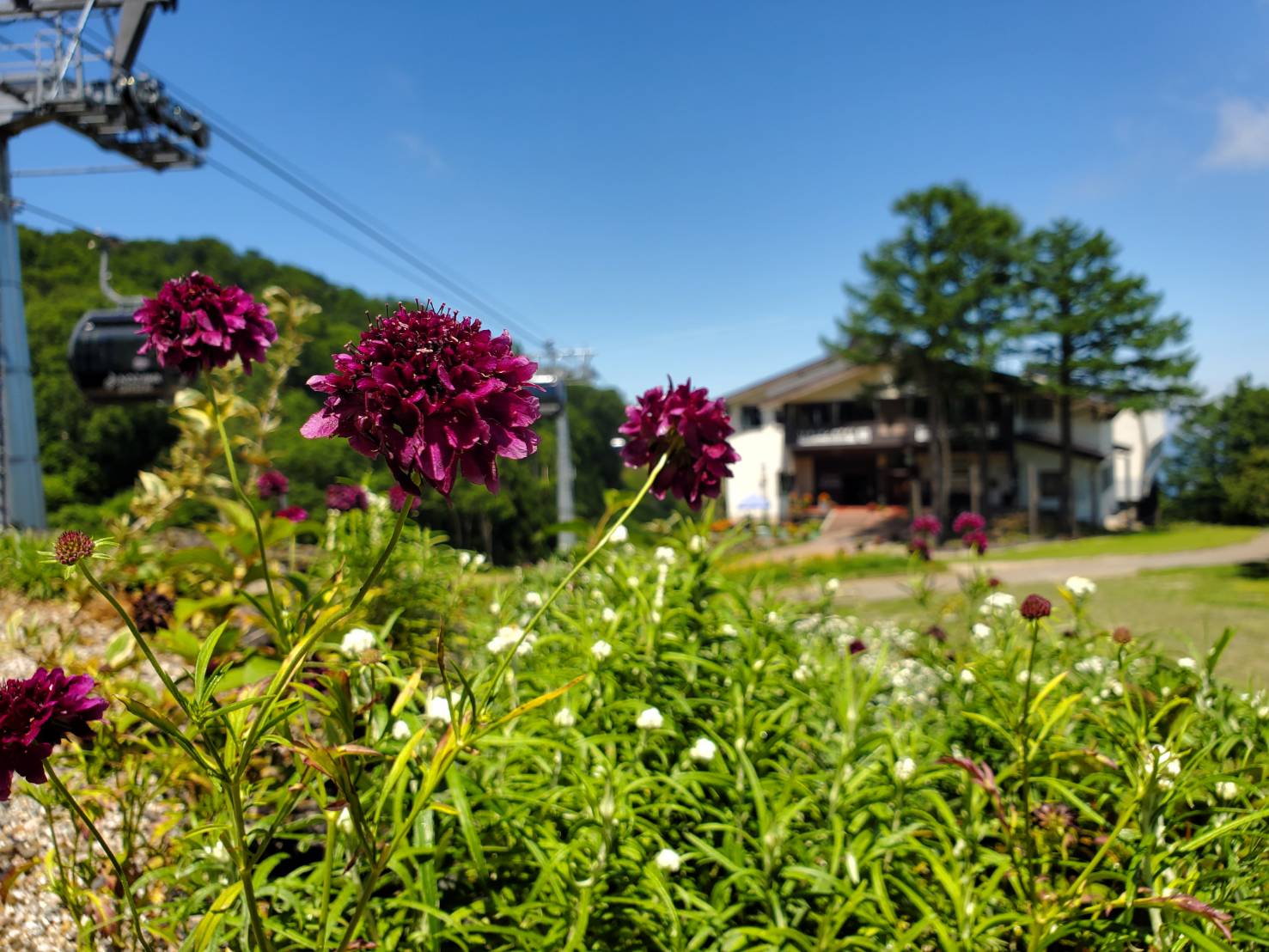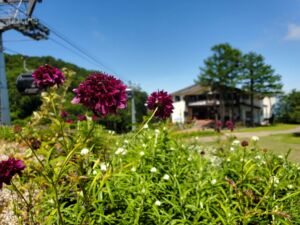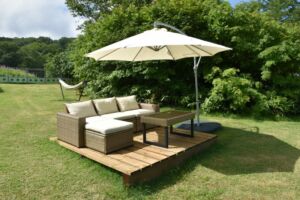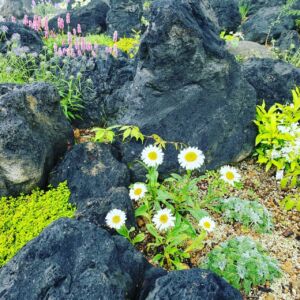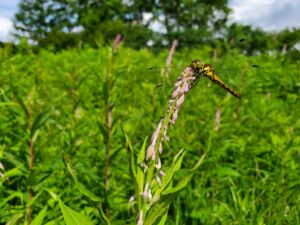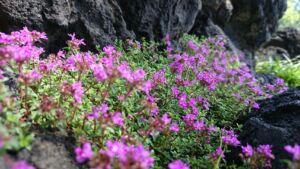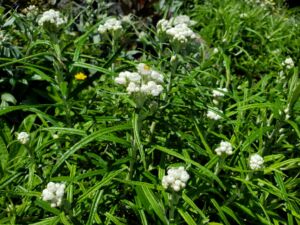Uenotaira Picnic Garden and flower fields
The Uenotaira Picnic Garden
~♫♪【A moment of graceful serenity and relaxation, both for the eyes and mind】♪♫~
That is the concept of Uenotaira Picnic Garden that offers more than 600 different species of alpine flowers and plants, ready to be enjoyed seasonally in a natural park.
Within the garden, rich in nature, while children are playing in the lawn area, let’s Nozawa Onsen scenery and its Mother Nature, catch your eyes on our wood deck, benches and tables from the 『Komorebi Terrace』 (*komorebi means sunlight filtering through trees in Japanese)
After enjoying the surroundings, treat yourself with a snack or a meal at our restaurant Servus Kitchen. You will find there colorful dishes prepared using locally grown summer vegetables and herbal tea with homegrown mint. Depending how you’re feeling today, you can either eat on the spot, or take it out to the picnic area thanks to our take out menu !
In the surrounding area, also enjoy the charm of Nozawa Onsen Summer by experiencing mountain bike and its various trails, be astonished with the view at Mt. Kogenashi Observatory, or even enjoy a trekking course that suit your level.
This summer, take advantage of The Uenotaira Picnic Garden to steal a relaxing moment of peace ♥
※ Picnic area closes at 4:00 PM
Uenotaira Highland Flower Fields
All around Nagasaka Gondola summit and its surrounding, let you surprise and be enchanted by all the different alpine flower species that grows on Nozawa Onsen Mountain !
For your pleasure, please find below some of the alpine flowers that you can find in the surrounding of Uenotaira Highland :
Yanagiran
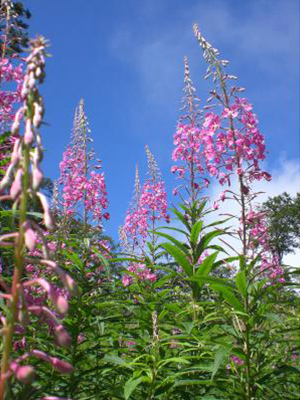
“Yanagiran” – known as Fireweed in the US and Willowherb in the UK. It is one the first to spring into the sunny grasslands of the plateau, and is common in ski resorts and open mountain fields. Although often confuse as an Orchid, it is actually a plant of the Evening Primrose family, and the name “Yanagiran” literally meaning “willow orchid” comes from the appearance of the willow-like leaves and the orchid-like flowers.
Yanagiran grows to about 1m to 1.5m, and the flowering season- July to September- is relatively long. The bright purple-colored four petal flowers bloom one after another from the bottom up.
The best time to see them on the Uenotaira Plateau is from early to mid-August.
At the end of summer, the snow-white, silky hair-like seeds are dispersed by the wind, reminiscent of the snow that will follow in the following months.
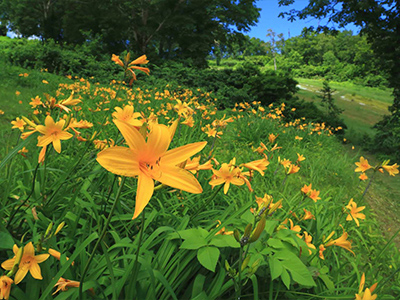
Nikko Kisuge
Day lilies, bloom from June-August, and grow to a height of 60 cm-80 cm. The flowers open during the day.
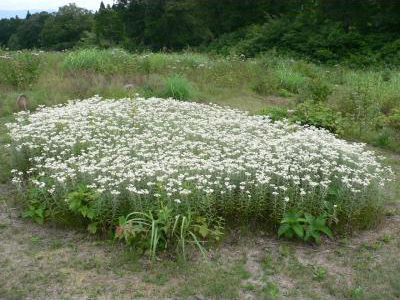
Yamahahako (Asteraceae)
Pearly everlasting- bloom from early August to late September. and have narrow, alternate leaves. An interesting feature is that the undersides of the leaves are covered in tiny hairs, giving them a woolly feel and appearance.
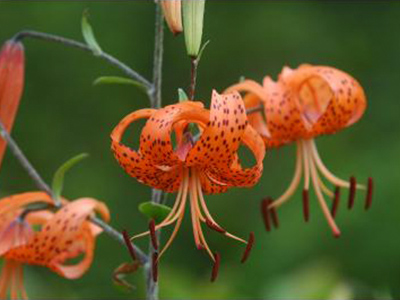
Oniyuri (Tiger lily)
Oniyuri or Tiger lily bloom from July to August. They grow to a height of around 50 cm. They have bright orange coloured flowers with deep crimson spots resembling the skin of a tiger- hence the name tiger lily. The Japanese means Ogre lily.
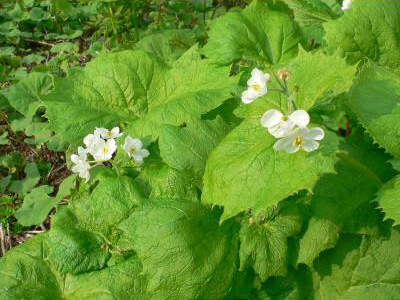
Sankayo (Skeleton flower)
Sankayo or Skeleton flower blooms from late May to early June. It grows in mountain forests. The leaves are circular and grow to 20 cm to 30 cm. Petals become transparent when wet with rain.

Utsubogusa (Heal all)
Utsubogusa or “Heal all” blooms from June to August. It is a member of the mint family and has large green leaves and purple flowers.
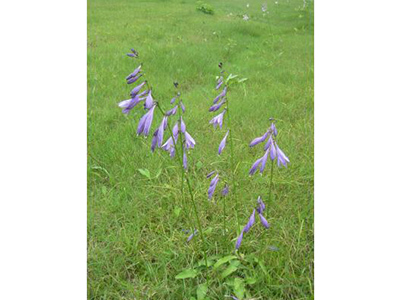
Kobagibōshi (Hosta sieboldii)
Kobagibōshi or Hosta sieboldii is another type of lily. It blooms from late July to late August, and has purple and occasionally white flowers.
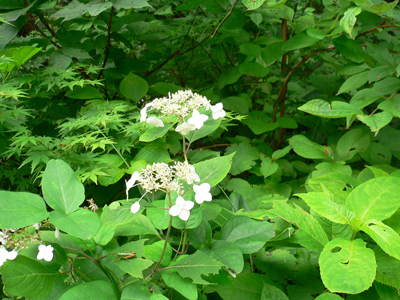
Yama ajisai (Hydrangea)
Yama ajisai or Hydrangea blooms to late June-August. A small type of hydrangea that grows native in Japanese humid forests, it has lace-like flowers.

Eji Ajisai (Hydrangea serrata)
Eji Ajisai or Hydrangea serrata is a larger cousin of Yama ajisai. It blooms from late June to late July. A deciduous shrub with a height of 1 to 1.5 m. Both leaves and flowers are larger than Yama ajisai, and range from pink, to purple and blue.
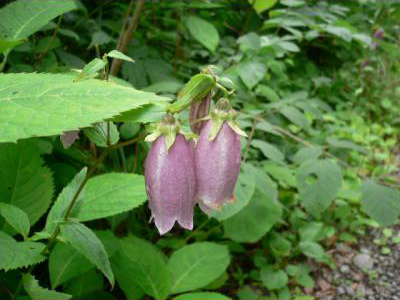
Yamahotarubukuro (Spotted bellflower)
Yamahotarubukuro or Spotted bellflower,
Blooms July to August. They have rough hairs on the leaves and stem, and the flowers are mostly magenta, but sometimes white. The Japanese name means “firefly bag”
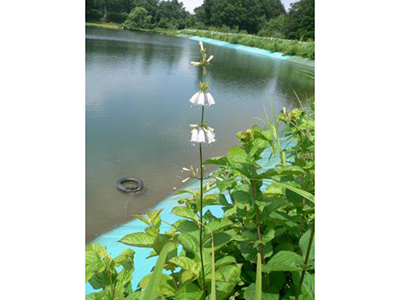
Tsurigane ninjin (Adenophora triphylla)
Tsurigane ninjin or Adenophora triphylla, also known as Japanese lady bell, blooms from August to October. The height can range from 30 cm to 100 cm, and the bell-like flowers range from purple to white. The stem root is long and white and shaped like a carrot. The Japanese name means “bell carrot”
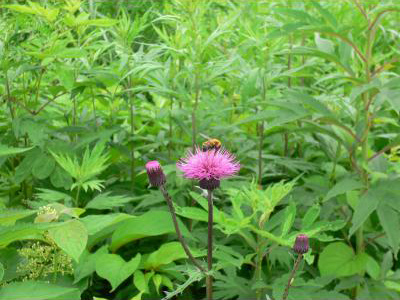
Noazami (Japanese thistle)
Noazami or Japanese thistle blooms from June to September. The height ranges from 50 cm to 100 cm. It is characterized by short spines on the edge of its leaves and the purple-red flower.
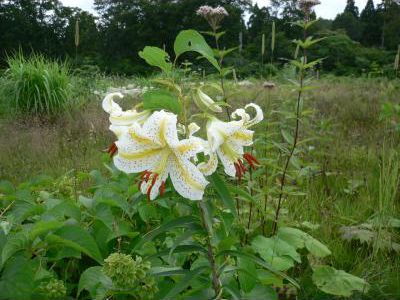
Yamayuri
Yamayuri – Mountain lily in Japanese or Golden-rayed lily in English, blooms from July to August. The flowers are large and bowl shaped with a central gold band.
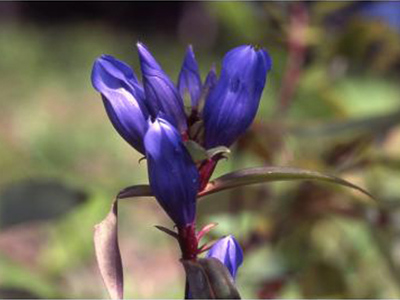
Oyamanorindou (Gentiana scabra)
The flowering season is from August to September. The flowers are dark purple and are attached to the tips of the stems. The flower is split in to 5 petals, and only slightly open.
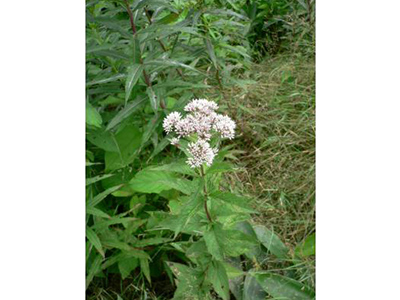
Yotsuba Hiyodori
Yotsuba Hiyodori blooms from July to September, and is a perennial herb native to China and Japan.
This herb grows in mountains and can reach about 1 m in height.
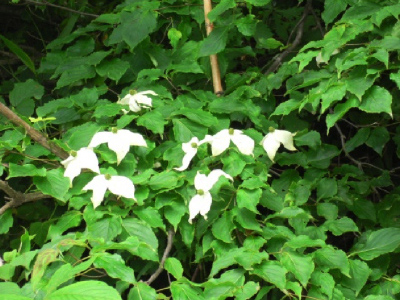
Yamaboushi (Kousa dogwood)
Yamaboushi or Kousa dogwood blooms in June and July. It is a tree that grows from 5 to 10 meters. The trunk is greyish brown. The leaves are slightly wavy.

